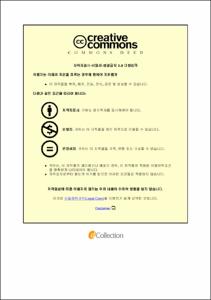전복 가두리 양식업의 생물경제학적 분석
- Abstract
- Studies on abalone farming started in the 1960s in Korea and the industry has rapidly increased since then. In particular, the abalone aquaculture industry achieved a significant progress in the 2000s when the cage culture method became available among abalone farms. Currently, 99% of the abalone production comes from aquaculture. However, the industry is faced with crisis due to low survival rates. It is known that the survival rate now stands at only about 50%.
The lower survival rates are caused by over-stocking and excessive feeding. These farming practices lead to deteriorating environmental conditions in farms and thus to reduced survival rates.
This study conducted a profitability comparison between a conventional common abalone farm and an improved farm which adopted a proper stocking density and feeding rate based on a study conducted by the National Institute of Fisheries Science (NIFS). The results of the NIFS study is as follows;
The study conducted an experiment using abalones 1 year in culture. They were farmed in cages at a stocking density of 1,800 animals per cage and the feeding amount was about 10% of the total weight. The survival rate was about 85.0%. Meanwhile, the improved cage farm stocked 1,600 abalones per cage with the feeding amount being 5% of the total weight. The survival rate improved to 90%.
In anther experiment, abalones 2 years in culture were used. The existing type of cage farm stocked 1,500 animals per cage with about 20% of the total weight provided as feed. This resulted in an average survival rate of about 72.0%. The improved type of farm stocked 1,200 animals and the feeding amount was about 5% of the total weight. It produced a higher survival rate of 90%.
Lastly, abalones 3 years in culture were investigated. The existing type of farm stocked 800 animals per cage and the feeding amount was about 20% of the total weight. The survival rate was lowered at 52.3%. Meanwhile the improved farm with a stocking density of 800 animals and the feeding amount being about 5% of the total weight resulted in a much higher survival rate of 92.8%.
Based on the above results, this study conducted 2 analyses: profitability and sensitivity to survival rate, price and cost. This study targeted abalones 1, 2 and 3 years in culture.
According to the results of the profitability analysis on abalones 1 year in culture, the existing farm had a 2.5% of profitability while the profitability of the improved farm was 5.9%. As for abalones 2 years in culture, the profitability of the existing farm was 23.4% while the improved farm had a higher profitability of 40.0%. As for abalones 3 years in culture, the profitability was 6.7% for the existing farm while 59.3% for the improved farm.
According to the results of the sensitivity analysis, as for abalones 1 year in culture, the existing farm had 0(zero)% of profitability with a survival rate of 82.9% and 12.7% of profitability with a survival rate of 95%. As for abalones 2 years in culture, the profitability was 0(zero)% with a survival rate of 55.1% and 21.2% with a survival rate of 70%. As for abalones 3 years in culture, profitability was 0(zero)% with a survival rate of 48.8%, 18.7% with a survival rate of 48.8% and 30.3% with a survival rate of 70%.
Price sensitivity was also analysed. As for abalones 1 year in culture, 10% increase in price leads to 11.3% profitability for the existing farm and 14.4% profitability for the improved farm. As for abalones 2 years in culture, 10% price increase results in 30.4% profitability for the existing farm and 49.1% for the improved farm. As for abalones 3 years in culture, 10% price increase leads to 15.2% profitability for the existing farm and 63.0% for the improved farm.
These results indicate that a proper stocking density and feeding amount at an abalone cage farm could lead to a higher survival rate as well as an improved profitability for the farm.
- Issued Date
- 2017
- Awarded Date
- 2017. 2
- Type
- Dissertation
- Publisher
- 부경대학교 대학원
- Affiliation
- 부경대학교 대학원
- Department
- 대학원 해양수산경영학과
- Advisor
- 김도훈
- Table Of Contents
- Ⅰ. 서론 1
1. 연구 배경 및 목적 1
2. 연구 방법 5
Ⅱ. 선행 연구 6
1. 국내 연구 6
2. 국외 연구 11
Ⅲ. 전복 양식업 현황 13
1. 전복 양식업 현황 13
2. 전복 가두리양식의 문제점 36
Ⅳ. 전복 가두리 양식업의 생물경제학적 분석 38
1. 분석 자료 38
2. 분석 결과 48
Ⅴ. 요약 및 결론 72
1. 연구 요약 및 결론 72
2. 연구 한계점 77
참고 문헌 78
- Degree
- Master
- Files in This Item:
-
-
Download
 전복 가두리 양식업의 생물경제학적 분석.pdf
기타 데이터 / 1.03 MB / Adobe PDF
전복 가두리 양식업의 생물경제학적 분석.pdf
기타 데이터 / 1.03 MB / Adobe PDF
-
Items in Repository are protected by copyright, with all rights reserved, unless otherwise indicated.